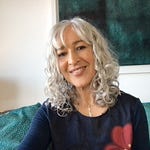Hi there,
For those of you new to Wild Writing with Sanjida, welcome! I’m an award-winning writer and I write about writing, wildlife and wilderness. This is the fifth instalment in my breakdown of How to Tell a Story, from start to finish, covering ideas, outlining, plot and character, using my short story Meat, written for Comma Press. (You’ll find ALL the essays on the craft of writing in The Process).
In this essay, we’re going to look at how to create a sense of place in your writing.
I looked through all my books on the craft of writing and NONE of them covered this! Yet I think it’s SO important. I treat the research and writing of location as carefully as I do character creation.
In fact, an extract from my second psychological thriller, The Stolen Child, was used in an Oxford University text book to illustrate ‘location’. I was thrilled, but also quite surprised at the passage that was chosen (the main character, Zoe Morley, pushing her buggy along the streets in Ilkley), as for me, the real focus of that book’s location was the dark, brooding presence of Ilkley Moor above the town.
Today, we’re going to look at how research into psychedelics can help you craft a sense of place and then I’ll give you a few tips on shaping the type of location you need for your writing.
According to novelist Amanda Curtain,
‘“Place” in fiction is not only about setting; it can also inform and be reflected in character, plot, theme, atmosphere, voice, language. A strong sense of place helps readers to make the imaginative leap into another world, whether that world is in the past, present or future.’
In other words, the ‘place’ in your fictional world has to do a lot of heavy lifting, not only providing a realistic and authentic setting for your characters, but creating and shaping many other internal aspects of the novel, in order to attune the reader’s emotional state with that of your story.
And this is why I like to refer to location or place in fiction as set and setting.
In the glossary for How to Change your Mind: What the New Science of Psychedelics Teaches Us About Consciousness, Dying, Addiction, Depression, and Transcendence Michael Pollan defines set and setting:.
‘The inner and outer environments in which a drug experience takes place; “set” is a term for the mind-set and expectations the person brings to the experience, and “setting” is the outward circumstances in which it takes place. Set and setting are particularly influential in the case of psychedelics. The terms are usually credited to Timothy Leary.’
Leary realised the importance of a person’s mental state as well as the physical environment when influencing the way in which a drug is perceived by the taker. In The Psychedelic Experience: A Manual Based on the Tibetan Book of the Dead, he writes:
‘Of course, the drug dose does not produce the transcendent experience. It merely acts as a chemical key — it opens the mind, frees the nervous system of its ordinary patterns and structures. The nature of the experience depends almost entirely on set and setting. Set denotes the preparation of the individual, including his personality structure and his mood at the time. Setting is physical — the weather, the room's atmosphere; social — feelings of persons present towards one another; and cultural — prevailing views as to what is real.’
So how do you create set and setting in your own writing?
Listen to this episode with a 7-day free trial
Subscribe to Wild Writing with Sanjida to listen to this post and get 7 days of free access to the full post archives.












